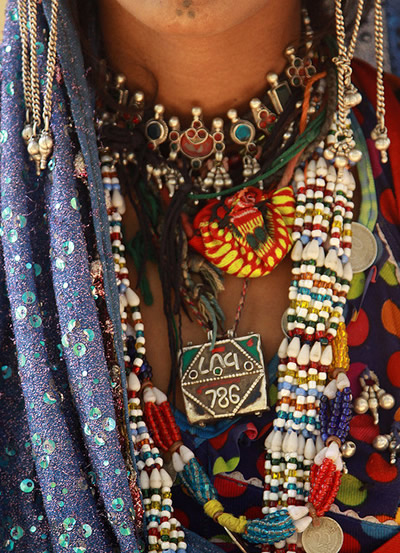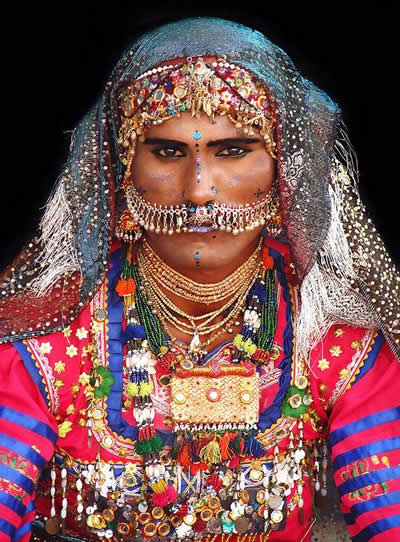 |
||||||||||||
|
KUCHI JEWELRY
|
 |
||||||||||||
|
KUCHI JEWELRY
|
|
|
The story of Kuchi
jewelry, like all tribal jewelry, is rich with influences from many cultures.
These beautiful pieces with colorful glass jewels and jingling bells originally came from the nomadic Pashtoon tribes that wandered the border areas of Afghanistan and Pakistan, along ancient routes between the seasons, moving down from the mountains in the winter and back to their homes in the summer. The word Kuchi itself is derived from a Persian word meaning migration, in relation to nomads or gypsies, and does not describe a particular group or people, but rather a state of being. Many different peoples or tribes from these areas have been classified as Kuchi but the original migratory nomads of this area are the Pashtoon. For more on the Kuchi tribes, see this page. The jewelry of these wandering peoples incorporates design elements from many cultures including those of India, the Middle East, Central Asia and the tribal areas of the former Soviet Union. These jewelry artists used coins, bells, and large colorful glass jewels to produce lovely chokers, necklaces, cuff bracelets, pendants, belts, rings, earrings, headpieces and more completely by hand, often in centuries-old designs. These pieces sometimes incorporated beadwork or embroidery. |
 |
||
| As
with many tribal cultures, jewelry makers were most often men and produced
jewelry for families or individuals on request or for sale. They used the
highest quality components available or that the family could afford. Older
pieces were made in good grades of silver whenever possible, sometimes up
to 90% and more, but if silver was not available or affordable, they used
other metals that were convenient. These might include nickel, brass, tin
or other base metals. The metal was melted down to make new pieces of flashing
jingling finery that were worn by the women of the tribes for ceremonies
and everyday purposes or decorated their animals for protection and luck.
The women would then often add beautiful beadwork or embroidery for color
and functionality. Modern Kuchi jewelry is made mostly from brass with some
nickel and perhaps a small quantity of other miscellaneous metals. |
||||
 |
|
|||
|
|
||||
|
Trade with the US and other western countries has made the original old pieces a scarcity these days. They can still be found, but usually have a high price attached to them, especially if they are silver. Good quality collectible pieces can still be found once in a while and new pieces abound in both high and low prices and quality. A quality piece, whether new or old, can be told by a nice design, a good feel and quality construction. If you have a question about the value of a piece, do some research before buying or purchase from a reputable dealer where you can make returns if you change your mind or are not satisfied. |
||||
| You can see examples of some of these pieces at The Red Camel. The Red Camel has been dealing in tribal Kuchi jewelry since 2003 and has built a great reputation within the belly dance community. Please visit my web site or see my other blog entries for more information! | ||||
| THIS PAGE IS A WORK IN PROGRESS. More will be added as I discover it, or have time to write. Please check back often to see additional info! | ||||